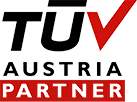
RISK-BASED INSPECTION
Send requestRBI (Risk-Based Inspection) – Risk-Based Inspection.
“Risk-Based Inspection” is the complete use of risk assessment to plan, execute and evaluate the results of technical certification (inspection), inspections and monitoring to control the mechanical integrity of the process system.
“Risk-based maintenance (inspection) is the process of systematically determining the Probability of Failure (LoF) and Consequences of Failure (CoF) for an item or group of equipment components to determine the optimal, prioritized timing for the next maintenance (inspection). In addition to introducing a management process, which is a significant contribution to improving technical integrity, RBI can also facilitate targeted and optimal technical inspections, which will improve the reliability of properly designed and operated equipment.

Using an RBI program reduces the risk of failure to a greater extent than using a typical inspection program at the same cost.
Transitioning to a state-of-the-art repair methodology
Unfortunately, most businesses today operate under the methodology of PRP – planned preventive repairs, namely repairs, not preventive maintenance. This leads to the fact that most failures of equipment are not predictable, and those that can be predicted are rarely taken into account when planning work. The sources of the standards applied by the companies are industry reference books and GOSTs, which were once developed by institutes for various types of equipment for certain industries. However, if you remember when exactly these standards were developed and how many years have passed since then, how many overhauls, upgrades and replacements the equipment has gone through, the effectiveness and relevance of these standards are most likely at no more than 50% of the actual equipment maintenance needs.
At the same time, in the West the principles of preventive maintenance have long been implemented in the business processes of repair units, which allows enterprises to reduce unforeseen accidents to a minimum by planning preventive maintenance work.
As part of a service to implement “condition-based” repair technology, TÜV Austria specialists:
- Formulate equipment criticality criteria and help select the highest priority equipment
- Help you choose the optimum maintenance strategy for selected assemblies and aggregates
- simulate possible methods of maintenance of separate equipment (costs for repairs, downtime and losses using different approaches – failures, planned repair or on condition) to choose the most economically effective method
- Develop a detailed description of procedures for diagnostics of actual technical state of equipment;
- make a list of the equipment to be diagnosed and a list of recommended diagnostic tools;
- develop inspection regulations, including control points of measurement, parameters of deviations, interpretation of results, the order of actions in case of malfunction detection;
- conduct economic assessment of the application of methods of maintenance “on condition”;
- make recommendations on optimizing the business processes of the maintenance service, as well as the distribution of roles and responsibilities for the successful implementation of the approach.
By correctly applying the methods of maintenance “on condition” a company can trace up to 80% of equipment malfunctions before they occur, which will allow to avoid costly accidents and multimillion losses. Such techniques as FMECA (Failure Modes, Effects and Criticality Analysis), RBI (Risk Based Inspection), RBM (Risk Based Maintenance) and others are the basis for such works.
In addition, the application of this technology allows the company to:
- track the real current technical condition of the equipment;
- control the quality of running repairs and commissioning;
- reasonably plan the timing and content of repair and commissioning work;
- plan the timing of purchases and the required quantity of spare parts;
- reduce the need for spare parts and materials in stock;
- increase equipment reliability, extend the period between repairs and service life;
- eliminate the need for unscheduled equipment repairs and production stoppages.



